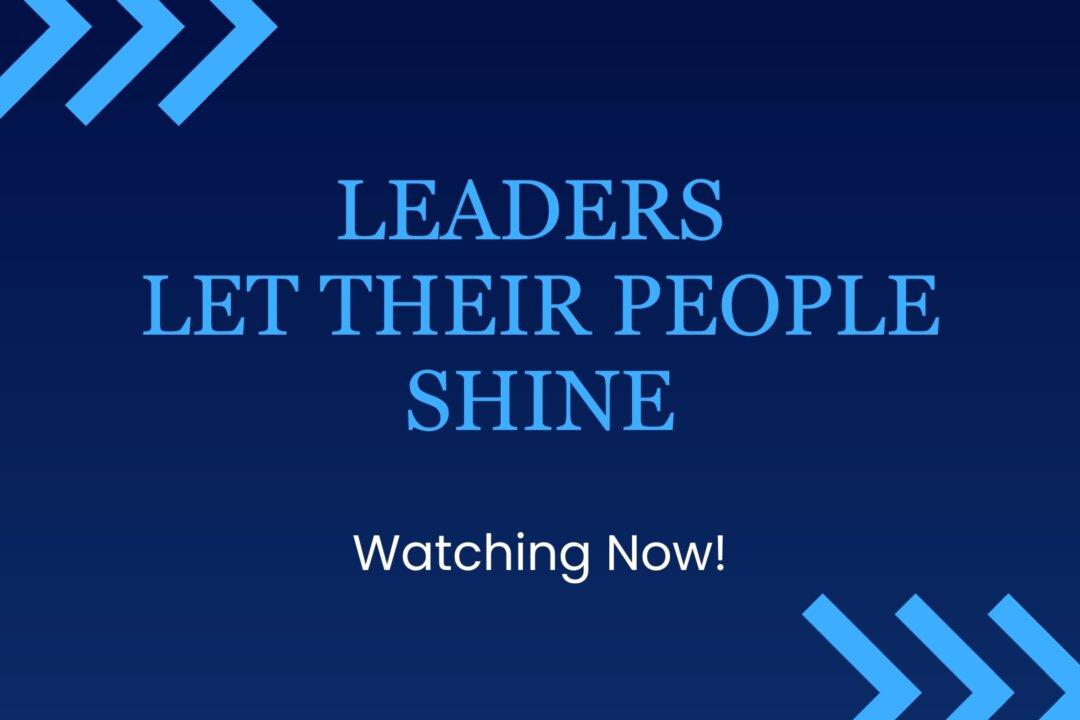Mark Sanborn, noted speaker and author, asserts, “Stories are the coat pegs of the mind. They are where people hang their ideas. Once they have a memorable story to help them remember, they can recall whatever important moral or point you have to make.”
Getting the attention of others and retaining important information is difficult today. Our world is overwhelmed with information overload. Life today has been described as sipping through a straw at a fire hydrant! So how do leaders get their mission-critical messages through the noise and the chaos created by overload and overwork? How do they engage their people to focus where it matters most and retain what is really important?
When you first saw a wide-eyed child stare intently at you as you read, “Once upon a time,” you had already discovered there is power in story to engage and impact every age. Good, authentic stories penetrate the noise, capture the attention of listeners, and provide a catalyst that can inspire people to take action or embrace and retain critical insights.
Story as Motivation
A successful manager can rally the team to extraordinary efforts by sharing a story that reminds them of how a team’s short-term sacrifice led to long-term success at a pivotal point in their history.
In the tough times, a well-crafted story can help transform a seemingly hopeless situation into an unexpected launching pad for opportunity.
For effective communication to have a lasting impact it must be relevant, remembered, and repeated.
One thing that gets remembered and repeated is a relevant story that captures an experience that elicits an emotional connection. A good story can become like a virus. It’s contagious. In fact, people like catching and spreading it around!
There is much to learn about story from Hollywood. Don Hewitt, the late creator and producer of 60 Minutes, asserted that the secret to its success was based on a very simple premise—"Tell me a story.”
Sharing Meaning Through Story
In Hollywood movies, important truths often come along for the ride.
The late Jimmy Stewart loved playing George Bailey in Frank Capra’s classic, It’s a Wonderful Life. Why not? He got to be reminded that every person makes a difference, that we are missed when do not apply our God-given gifts to fulfill what we are called to do. The messages of many classic movies remain as powerful today as the day they were made.

Hollywood keeps finding new stories with compelling characters taking a hero’s journey. They want struggles on the way to a well-earned victory. If such stories work in Hollywood, you as a leader can use the real-life stories of the heroes and teams in your own organization.
You don’t have to make up characters; you can honor your leaders, teams, and customers who have stories worth sharing.
The best leaders are “story doctors” who keep their organization’s story positive and meaningful.
They help turn the tough challenges and the bad days into stories of people overcoming obstacles and earning an optimism that will continue to drive the team into the future. They use stories as a catalyst for change and an enabler for focused achievement.
Driving Change Through Story
Even nightmare stories can prove helpful. Fear and hope are both strong motivators. Your job as leaders is to unfreeze the status quo before you sell any change to your people.
When you wait for a crisis to be your catalyst for change, you seldom have the resources or time to do it well.
In short, resist trying to sell people on new solutions when they don’t even have an awareness of the need to change.
Keep asking yourself, “What can I do to generate an awareness of the need to change? How do I become an eye-opening translator of the advantages for strategic, service-driven change?” While noting the cost of doing nothing, sell the value and hope involved in embracing change as a way of life.
Music in a movie creates anticipation. As leaders, you are called to be the music for your people. What stories about threats are you aware of that can get your people ready for needed change? Are there stories about other organizations’ disasters that can warn your team about dangers they may face if they don’t meet the challenges ahead? Stories sell the need, but they can also enliven the vision of a compelling future.
Fuel the Future
Tom Peters, author and consultant, asserted, “We say to chief executive officers: Paint the picture, paint the vision, preach the story. At the same time, remember that listening and involvement are the ways that you'll pull it off.”
The greatest challenge you may face as a leader is to move your people into an uncharted future by keeping hope alive and sustaining the commitment for every member of your team.
The most significant difference between a vision and a hallucination is the number of people who can see it. So, if you don’t love to tell a compelling story of how your team can help invent the future, find a new job.
In fact, your job is to keep shaping and telling your organization’s story to sustain your team’s hope for an ever brighter future. Fill out your version of “Back to the Future”! Bring life to your vision by telling a future story that captures successfully what it would be like to achieve your dreams. Start with this phrase and play with it—“Imagine a future where….”
Don’t be afraid to draw on the stories of past successes that remind your team of what is possible.
To reinforce the 3M culture of innovation with new employees, they continue to tell its “Post-it” story about a failed glue that just wasn’t sticky enough. But thanks to some persistent secretaries who found a use, this “sub-par” glue helped create one of the most renowned and appreciated inventions in the modern age. As a result, today’s 3M teams work to be the subject of the next story of innovative excellence.

Anita Ward, while with Cambridge Technology Partners, talked about the importance of telling stories about an organization’s heroes: “My solution to transforming our culture is campfire stories. Campfire stories turn experiences into narratives, people into heroes and new ideas into enduring traditions.”
“I invite people to sit down with me in a safe, comfortable setting. I get them to talk about the themes, emotions, and sensibilities that surround change. After I talk with people, I retell their stories to the rest of the organization. I start out by publishing each campfire story in as many formats as possible: email, a newsletter, photos, a collaborative database…. All of a sudden, change is no longer an abstract business mandate; it’s a message embodied in a hero. So the adoption rate goes up, because people like to follow heroes.”
The difference between being enthusiastic and generating enthusiasm is whose stories you get excited about. Be as excited about the stories of others in the organization as you are about your own. Capture hope and excellence where you find it, fan the sparks, and reflect the energy to the others who do not yet believe that change can work!
Emotion Points, Not Bullet Points
Good stories are a rich reservoir of enthusiasm, feelings, and wisdom. Good stories touch your people where they work and provide images for retention.
Master questions to surface your best stories: What’s been working that you are most proud about? Tell me about how your team overcame that challenge? What are you doing differently that is worth bragging about?
Noel Tichy reminds us, “Business people are always describing the future with bullet points. That’s stupifying. If you put people to sleep; they don’t remember a thing.”
The best story tellers use on-target stories from their own lives and their own organization to make their messages memorable. After all, your own stories are easier to remember, and stories from your own organization will honor your audience. The best stories select you. They leap out at you. Once found, practice telling your new stories to as many people as you can.
Make your stories shorter and more impactful through practice. Save only those that have the most impact and move forward the messages you want to reinforce.
Keep a list of your stories and keep adding to it. Whether you use your computer, spiral notebooks, or a journal, don’t let good anecdotes fade away. The palest pencil mark is better than the best memory; write them down! Good stories are treasures worth keeping! Test each story for their value.
Ask yourself, “What about this story matters?” The best stories have a point or truth worth highlighting in a memorable way.
Then, use your stories. People remember narrative “chunks” more easily than they ever remember abstract teaching points. Good stories unlock those seldom-used doors and lead the listener through their own house of memories. Those memories, once triggered, allow audiences to experience themselves, their lives, and their memories in a fresh way. Some of your best communicators organize their content around their stories. They will make a point, tell a story, make a point, tell a story, and continue until their talk is over.
You are paid to lead, not to be a professional storyteller. When you tell a story, you want people to say, “What a great story worth remembering and sharing!” not just “What a great storyteller!”
Too many business presenters overload their presentation with data, graphs, and bullet points. When was the last data slide or graph that you remember as a highlight of a talk? Make sure your story is supported by the facts but keep meaningful stories at the heart of your message. When done well, it brings your data and points alive for your listeners in a way that is remembered and shared.
Your organization is like a diamond; your positive stories allow you to show its beauty one facet at a time.
Keep capturing best practices where you find them. Sell the need for change, enliven your vision for the future, and let your heroes shine. Get busy unleashing the power of story in your organization! They deserve to know “The Rest of the Story” waiting to be told! Rest assured that as their leader, they are waiting for the next story you alone can tell!
The Epoch Times copyright © 2024. The views and opinions expressed are those of the authors. They are meant for general informational purposes only and should not be construed or interpreted as a recommendation or solicitation. The Epoch Times does not provide investment, tax, legal, financial planning, estate planning, or any other personal finance advice. The Epoch Times holds no liability for the accuracy or timeliness of the information provided.







